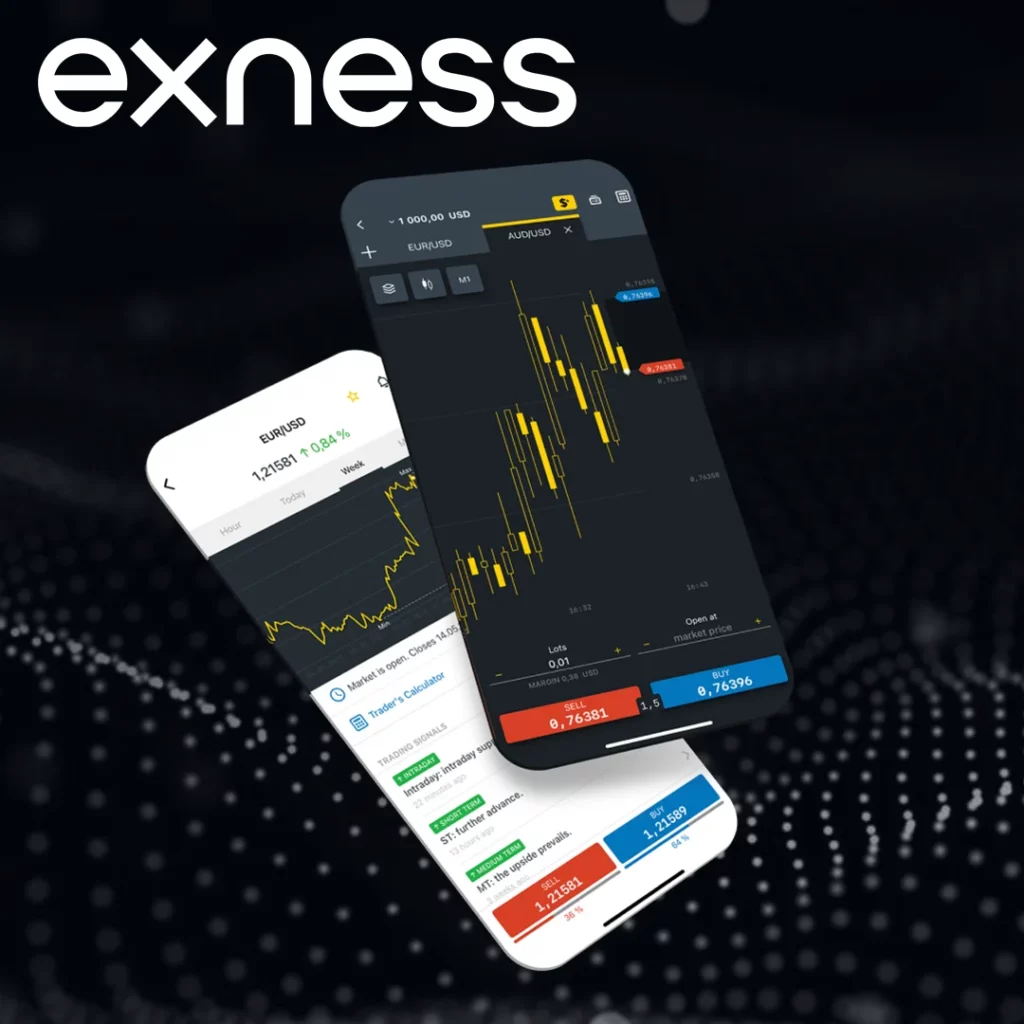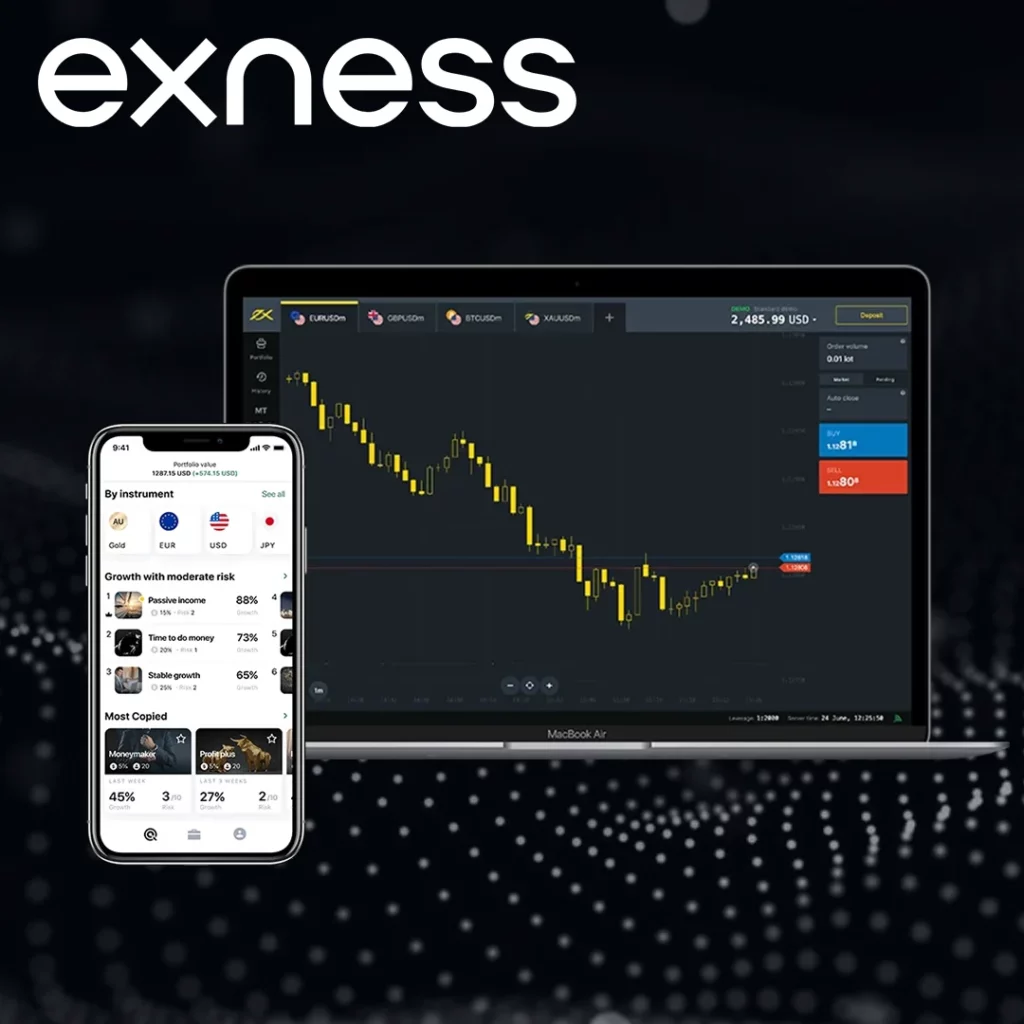When it comes to online trading, one of the key factors that traders often focus on is the spread. The spread refers to the difference between the buying price (ask) and the selling price (bid) of an asset. Understanding how spreads work, and what affects them, can be crucial for traders looking to manage costs and enhance their profitability.
Exness is a global forex broker offering a range of accounts and services, including competitive spreads. If you are looking to trade with Exness, understanding the different types of spreads they offer, what affects them, and how you can manage them, will give you an edge in your trading journey.
What Are Spreads?
A spread is essentially the cost of executing a trade. Every time you enter a position, the price at which you buy (ask) is always slightly higher than the price at which you sell (bid). The difference between these prices is the spread.
This cost is a key consideration, especially for short-term traders such as scalpers or day traders. A narrow spread can make a significant difference, especially when trading in large volumes or executing many trades throughout the day.
The spread is typically quoted in pips, which is the smallest unit of price movement in forex trading. For example, if the EUR/USD pair has a bid price of 1.1000 and an ask price of 1.1005, the spread is 0.0005, or 5 pips.
Types of Spreads Offered by Exness
Exness offers several types of spreads, allowing traders to choose according to their trading style and strategy. These include:
- Fixed Spreads: In this model, the difference between the bid and ask price remains constant regardless of market conditions. Fixed spreads are ideal for traders who prefer predictable costs and want to avoid sudden price changes that might occur in volatile markets.
- Variable (Floating) Spreads: With variable spreads, the difference between the bid and ask price fluctuates based on market conditions. This type of spread is typically narrower during times of low volatility, but can widen during high volatility events, such as economic data releases or geopolitical events.
- Raw Spreads: Raw spreads are the closest representation of the true market spread, based on real liquidity providers. This type of spread is typically available for traders with ECN (Electronic Communication Network) accounts, and they come with additional commissions. This model is best suited for active traders who need tight spreads and are comfortable with paying a commission for access to better liquidity.
The spread you encounter when trading with Exness can be influenced by various factors, some of which are related to the broker and others to broader market conditions. Here are some key factors that affect spreads:

- Market Liquidity: The liquidity in the market can significantly impact spreads. When liquidity is high, spreads tend to be narrower, as there are more buyers and sellers. Conversely, when liquidity is low, spreads can widen due to the lack of available orders at a specific price.
- Time of Day: The time of day can also affect spreads. During major market hours (such as the London and New York trading sessions), spreads tend to be narrower because of increased trading activity. Outside of these hours, particularly during periods of low trading volume, spreads can widen.
- Volatility: Events like economic reports, central bank announcements, or geopolitical tensions can increase market volatility. In times of high volatility, spreads often widen as brokers and liquidity providers adjust to the increased risk.
- Currency Pair: The spread on currency pairs can vary depending on the pair’s liquidity and popularity. Major pairs like EUR/USD or GBP/USD usually have narrower spreads compared to exotic pairs or minor pairs, due to the higher volume of trading.
- Account Type: Different account types at Exness offer different spread models. Standard accounts, for instance, might offer higher fixed spreads, while Pro and Raw Spread accounts offer tighter spreads with additional commissions.
Exness Spread Comparisons
The spread you experience on Exness depends on the account type and the asset you’re trading. The following table provides an overview of the spread types and the typical spreads for various currency pairs across Exness’s different account offerings.
Fixed Spreads (Standard Account)
| Currency Pair | Spread (pips) |
| EUR/USD | 1.0 |
| GBP/USD | 1.5 |
| USD/JPY | 1.2 |
| EUR/GBP | 1.5 |
| USD/CHF | 1.3 |
| AUD/USD | 1.4 |
Fixed spreads are suitable for traders who prefer certainty in their trading costs. These spreads remain unchanged throughout the trading day, regardless of market conditions.
Variable Spreads (Pro Account)
| Currency Pair | Typical Spread Range (pips) |
| EUR/USD | 0.1 – 1.5 |
| GBP/USD | 0.2 – 2.0 |
| USD/JPY | 0.1 – 1.3 |
| EUR/GBP | 0.2 – 1.8 |
| USD/CHF | 0.1 – 1.6 |
| AUD/USD | 0.2 – 1.4 |
Variable spreads are ideal for active traders who take advantage of market fluctuations. They can be as tight as 0.1 pips in optimal conditions but may increase during periods of high volatility.
Raw Spreads (ECN Account)
| Currency Pair | Raw Spread (pips) | Commission |
| EUR/USD | 0.0 – 0.3 | $3 per lot |
| GBP/USD | 0.0 – 0.5 | $3 per lot |
| USD/JPY | 0.0 – 0.2 | $3 per lot |
| EUR/GBP | 0.0 – 0.5 | $3 per lot |
| USD/CHF | 0.0 – 0.3 | $3 per lot |
| AUD/USD | 0.0 – 0.3 | $3 per lot |
Raw spreads reflect the true market price, providing the tightest spreads possible. However, they come with a commission fee, which compensates for the lack of markup on the spread. This model is designed for high-frequency traders who require minimal slippage and tighter execution costs.
Factors Influencing Spreads

Several factors contribute to the variation in spreads. These include both internal factors related to the broker, such as account type, and external factors, such as market conditions.
Market Liquidity
Liquidity is a significant factor affecting spreads. In liquid markets, such as those involving major currency pairs, the spread tends to be narrower because there are more buy and sell orders. In contrast, in illiquid markets or when trading exotic pairs, the spread is generally wider due to the lack of market participants.
Time of Day
Exness’s spreads tend to be tighter during peak trading hours when major markets such as London and New York are open. During these times, there is more trading activity, leading to better liquidity. On the other hand, during off-peak hours or weekends, liquidity decreases, and spreads can widen.
| Time Zone | Peak Trading Hours | Effect on Spreads |
| London Session | 08:00 – 16:00 GMT | Tighter spreads |
| New York Session | 13:00 – 22:00 GMT | Tighter spreads |
| Asian Session | 00:00 – 09:00 GMT | Wider spreads |
Volatility
Spreads often widen during periods of heightened volatility. Economic events such as central bank decisions, GDP reports, or geopolitical developments can lead to significant price fluctuations, causing spreads to increase.
Currency Pair Liquidity
The liquidity of specific currency pairs is another factor that affects spreads. Major pairs like EUR/USD, GBP/USD, and USD/JPY tend to have tighter spreads because they are heavily traded, and liquidity is high. Conversely, exotic currency pairs such as USD/TRY or USD/SGD may experience wider spreads due to lower liquidity.
| Currency Pair | Liquidity Level | Spread Range (pips) |
| EUR/USD | High | 0.1 – 1.5 |
| GBP/USD | High | 0.2 – 2.0 |
| USD/JPY | High | 0.1 – 1.3 |
| EUR/JPY | Moderate | 0.2 – 1.6 |
| USD/TRY | Low | 0.5 – 3.0 |
How to Minimize Spreads in Your Trading
Spreads are an inevitable part of trading, but there are several ways to minimize their impact on your trading:
- Choose the Right Account Type: If you are a frequent trader or use strategies that require very tight spreads, you might want to consider the Raw Spread or Pro accounts at Exness. These accounts offer tighter spreads, although you may pay commissions in addition to the spread.
- Trade During Peak Hours: The best time to trade for narrow spreads is during peak market hours. These are typically when major markets such as London, New York, and Tokyo overlap. During these times, liquidity is highest, which leads to tighter spreads.
- Use Limit Orders: By using limit orders rather than market orders, you may be able to avoid entering a trade at a less favorable price. This helps you control the cost of your trades.
- Avoid Trading During Major News Releases: Spreads can widen significantly during high-impact economic events like central bank meetings or major news releases. While these events can create opportunities, they can also lead to slippage and wider spreads. If you are looking for tighter spreads, it might be best to avoid trading during these times.
- Monitor Volatility: Pay attention to volatility indicators such as the Average True Range (ATR) or other volatility metrics to understand when spreads may widen. This can help you time your trades better.

Conclusion
Understanding spreads and how they work with Exness is vital for managing your trading costs. Whether you’re using fixed, variable, or raw spreads, knowing when to trade and what spreads to expect can make a significant difference in your overall profitability. By choosing the right account type, timing your trades effectively, and employing strategies like using limit orders or trading major pairs, you can minimize the impact of spreads and enhance your trading performance.
Exness’s spread options are competitive, and the flexibility offered in their account types allows traders to tailor their experience based on their needs and trading style. The more informed you are about the factors that influence spreads, the better you can manage your trading costs and maximize your chances of success in the forex market.

Trade with a trusted broker Exness today
See for yourself why Exness is the broker of choice for over 800,000 traders and 64,000 partners.
FAQ
What are Exness spreads?
Exness spreads are the difference between the bid and ask price of a currency pair, representing the cost of executing a trade. Spreads vary based on the account type and market conditions.



